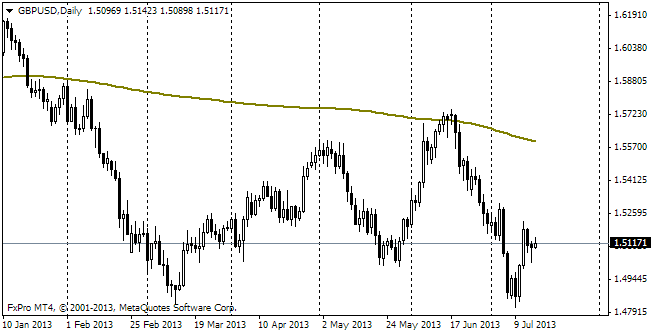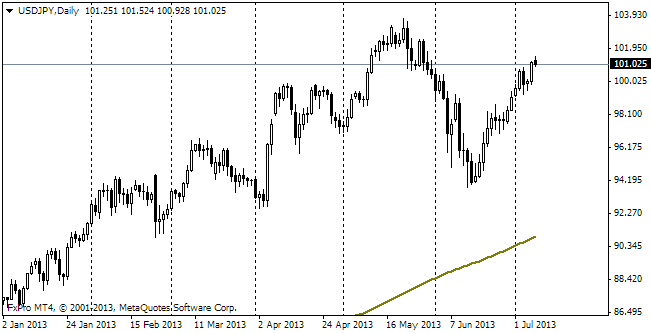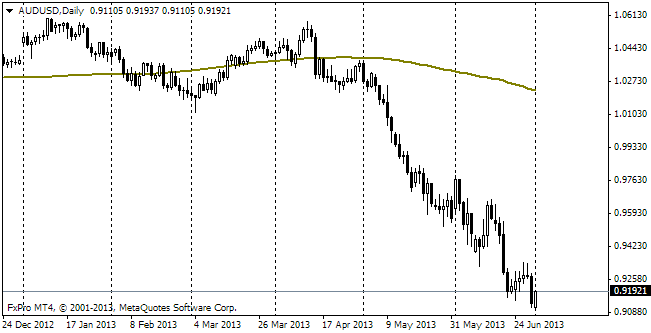EUR/usd
The single currency feels quite confident. At least it is strong enough to get above 1.3600. Yet, it should be noted that the attempts to fray nerves of the 200-day MA haven't been crowned with success. For now. On Thursday the pair got to 1.3642 and on Friday – to 1.3633 with the daily closure at 1.3600, just like now. And the 200-day MA has now risen to 1.3660 against 1.3630, when it tested that important technical level in May. The pair's strength is mainly explained by certain disappointment of investors in the dollar. The Fed's members don't hurry with the policy toughening. The official statement leaves space both for acceleration of tapering and for its slowdown. However, it is clear that after a series of the poor key economic releases this phrase is mainly treated as a warning about a possible pause next time. In the meantime, apart from the GDP's decline in the first quarter and decrease in the number of new jobs, other statistics are generally good. First, now it looks as if the pace of hiring new employees over the first five months of the year were close to 200K. There are more and more signs that the labour market is warmed up. And this entails growth of inflation and consumer activity. The freshest data on prices already surprised us, showing the CPI growth at 2.1%. The Core CPI has accelerated to 2.0% and this is the highest level for over a year. The retail sales that month fell short of expectations, but the actual retail sales growth (with inflation excluded) makes the good 2.1%. The growing demand from the Americans provokes increase in the trade deficit, taking the USA back onto the path of spending.
GBP/USD
The BOE's officials keep messaging the market that the rate increase will be performed very soon. David Miles said in his article to the Telegraph that the day when he votes for the rate increase is very close. The sterling at the end of the previous week climbed above 1.70. It seems that only the dollar's strength can push it out of there. And now it seems to be a problem.

USD/JPY
usdjpy is having same problems. The growth in the stock exchanges, which earlier was always accompanied by weakening of the Japanese currency, doesn't produce such an effect any longer. The US dollar took most of the demand for funding away from the yen, which, in its turn, broke the correlation between stocks and the USDJPY rate. And though the pair holds out at all the key levels, the fact that it is unable to resume growth after 5 months of sideway trading still arouses certain nervousness.

AUD/USD
The data on the activity index in the real sectors of China managed to maintain demand for the Australian currency. By the way, it looks more as demand for commodity currencies, as the Loonie is in similar demand. This way or another, the aussie has reached the highest rate against USD for a month and a half and is now trading at 0.9440. Breaking above 0.9460 can arouse stop gathering by the bears and provoke an upward momentum afterwards.
